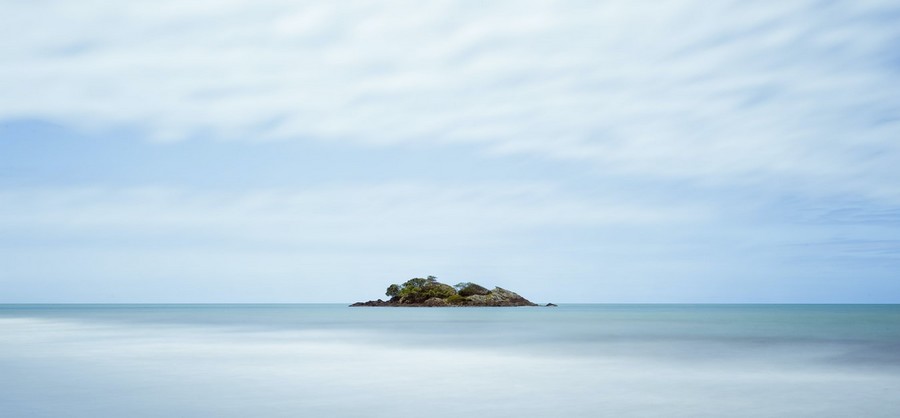Islands are one of many natural phenomenons that exist on earth. Islands are found all over the world and vary in size and shape.
Some are more remote than others while some islands are right off the coastlines of various countries. By definition (and by visual sight), islands are pieces of land surrounded by a body of water.
However, are these chunks of land floating or grounded?
The answer to whether or not islands are floating isn’t simple but it also isn’t overly complicated either.
There are man-made floating islands and floating islands that were once a piece of a bigger island mass or detached portions of land from continents. These floating islands are generally made up of aquatic plants, mud, and other earth-based materials. These islands are found all over the world.
They can range in thickness and size which is purely dependent upon how much of the land is detached from its original source. Below is a closer look at man-made and naturally occurring floating islands.

Naturally Occurring Floating Islands
Naturally occurring floating islands are the result of pieces of land breaking off from a larger source of land. This usually happens due to extreme weather or natural disasters like earthquakes and volcanic eruptions.
Science has shown that the world’s current continents and islands were once one gigantic landmass, known as the Pangaea
As the Pangaea was broken down, continents were created along with smaller islands that spurred from the transformation. These particular islands are not actually floating.
They are considered grounded islands under the ocean, surrounded by bodies of water. These are different from naturally occurring floating islands or man-made floating islands.
Weather and natural disasters such as earthquakes are only predictable to a certain degree. Because these events aren’t definitively able to be pinpointed, floating islands can be created after splintering from various large continents.
Oftentimes, these natural floating islands will travel great distances carrying wildlife and plant life from one area of the world to another.
These are quite fascinating in their way even though they aren’t quite the same as regular islands that are simply surrounded by the ocean.
Moreover, natural floating islands are sometimes small scale bodies of land. Usually, these are found in marshes or river areas and are strictly chunks of vegetation that have migrated away from the shorelines of the primary land source.
These smaller isles can be found all over the world and aren’t like traditional ocean islands.

Artificial Floating Islands
Man-made floating islands, or artificial floating islands, are exactly as they sound. They are islands made of various earth materials that are created off mainland coastlines for a variety of reasons.
Some of the earliest man-made islands in history were from the Uros people of Lake Titicaca
They then built small villages upon the floating reed as a means of staying safe from various outside attacks.
The Uros people’s use of reeds to create these floating islands eventually become adopted by various cultures around the world. It was found that the reed beds could aid in reducing water pollutants and improve water quality.
Additionally, these artificial floating islands are a way to create biodiversity within a natural habitat as well.
Places like Australia use reed bed
While regular islands give the appearance of floating on top of the water, they simply aren’t. However, these two types of floating islands showcase how there can be islands that aren’t grounded beneath the ocean waters.
How Do Islands Stay Afloat?
Islands that aren’t considered floating islands stay afloat
It is often thought that some islands are shrinking in size. However, that isn’t necessarily true.
While weather or natural disaster can play a big role in the shrinkage of an island, the appearance of them becoming smaller is due to rising sea levels.
As sea levels rise, islands can take on the appearance of shrinking.
The various systems of floating islands that exist throughout the world are able to stay afloat due to water buoyancy.
Essentially, the upward force of the water on the floating islands (which are usually made of reeds and other earth materials) acts as a means of floating.
Additionally, the earth materials of floating islands have a natural buoyancy which aids in their floatation as well.
Why Do Islands Not Sink?

Traditional islands that are the result of the initial breakdown of the Pangaea
These islands are grounded to the seafloor which gives them the support that they need to stay above water.
Even though they can’t sink, these islands can still experience a shift in their bases. If this occurs, an island can disappear into the ocean. However, it hasn’t technically “sunk” because the majority of the island is still intact and is simply covered by more water making it look smaller.
When there is breakage or shifting in the island’s base, it causes the island as a whole to become more submerged in the ocean.
To be defined as “sinking”, the landmass would need to be completely disjointed and break apart under the ocean’s surface. This would mean that the island as a whole was no longer a complete piece of the landmass.
As expressed before, islands can appear smaller due to rising sea levels. Rising sea levels in certain parts of the world can give the illusion that islands are sinking, when in fact, they are not.
Islands are a fascinating part of the natural world. Even though a large part of the world’s islands aren’t technically floating, it is still interesting to know there are man-made floating islands and some naturally occurring ones as well.
More Pages On Islands
Queensland, Australia is home to a variety of idyllic places to visit. From pristine beaches to rainforests and everything in between, it is brimming with adventure. This is particularly true for...
Australia has over 10,000 beachy areas that include beaches off of various islands off its eastern and north-eastern coastline. With so many beaches available, it is important to know which of the...


